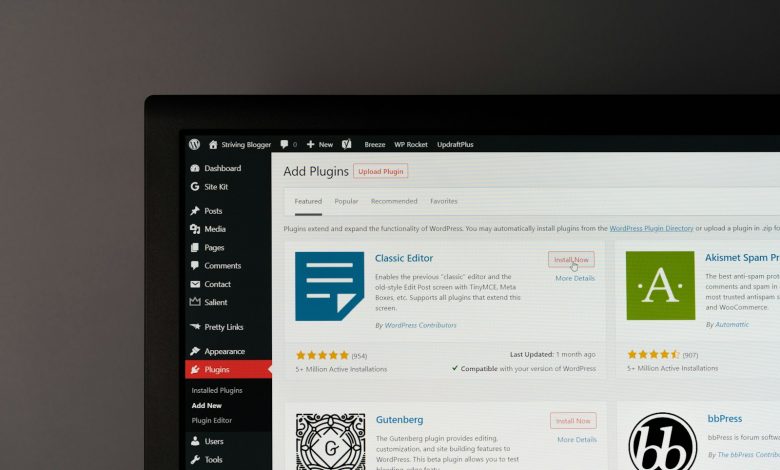
Table of Contents
Understanding the “This Site Contains Malware” Warning in WordPress
The "This Site Contains Malware" warning is a serious alert that can appear on your WordPress site, indicating the presence of malicious software that could harm users or compromise your website's security. This alert is typically generated by search engines like Google or browsers such as Mozilla Firefox, which scan websites for harmful content to protect users. The presence of malware on your site can lead to a series of negative consequences, not only scaring away your visitors but also severely impacting your search engine ranking and overall online reputation.
Malware on WordPress sites can take many forms, from harmful codes and plugins to unauthorized file injections. Hackers deploy malware with the intention to disrupt, damage, or gain unauthorized access to a website. Once malware is installed on your site, it can lead to unauthorized redirects, spontaneous downloads, or unwanted pop-ups, among other issues. Recognizing this threat early is crucial for safeguarding your site and avoiding the dreaded malware warning.
To understand why your site has received this warning, it's essential to be aware of the ways Google detects malware. Before flagging a site, Google utilizes its crawling mechanisms to inspect websites for suspicious activities or malware signatures. Upon detection of potential threats, Google aims to protect internet users by displaying the malware warning, preventing access to the compromised site. Therefore, regularly scanning your website for vulnerabilities and keeping all software up to date are preventative measures that can help you avoid encountering this warning.
A crucial aspect of managing a WordPress site is to ensure security measures are consistently applied. This includes utilizing reliable antivirus software on the computer used for site administration, being cautious with browser extensions, and steering clear of untrusted sources. Additionally, employing maintenance services or tools designed for WordPress can significantly reduce the risk of malware infections by regularly checking and fortifying your site's defenses.
Ultimately, addressing the "This Site Contains Malware" warning promptly and effectively is paramount to maintaining the integrity and trustworthiness of your WordPress site. Ignoring the alert or delaying action can not only drive away loyal visitors but also lead to more severe consequences, like getting blacklisted by search engines or facing legal penalties for spreading malware. Understanding the potential causes and preemptive measures is essential for all WordPress site owners to protect their digital assets and preserve their online presence.
Common Reasons Your WordPress Site May Be Flagged for Malware
There are several factors that can lead to your WordPress site being compromised and subsequently flagged for containing malware. These factors range from using insecure themes and plugins, neglecting updates, possessing weak administrative passwords, to hosting your site on a vulnerable server. Identifying and addressing these issues promptly can significantly mitigate the risk of a malware infection, thus preventing your site from being flagged by Google or other web security agencies.
How WordPress Sites Become Infected with Malware
WordPress, being one of the most popular content management systems (CMS), is a prime target for attackers looking to exploit vulnerabilities for malicious purposes. Malware infections in WordPress sites can occur through various channels, impacting the site's functionality, compromising user data, and tarnishing the site owner's reputation. Understanding these vulnerabilities is the first step in protecting your site against potential threats.
Weak Passwords and Insecure Admin Practices
One of the most common ways WordPress sites become compromised is through weak passwords and insecure administrative practices. Using easily guessable passwords or reusing passwords across multiple sites significantly increases the risk of brute-force attacks. Implementing strong, unique passwords for WordPress admin accounts, along with employing two-factor authentication (2FA), can dramatically enhance your site's security posture. Additionally, limiting login attempts and monitoring user activity can further safeguard your site from unauthorized access.
Outdated Themes, Plugins, and Core Software
Running outdated versions of WordPress core, themes, and plugins is another leading cause of malware infections. Developers regularly release updates for their software to patch known vulnerabilities. Failing to apply these updates in a timely manner leaves your site exposed to attacks. Setting up automatic updates for themes, plugins, and the WordPress core can help keep your site secure. Additionally, regularly reviewing and removing unused plugins and themes minimizes potential entry points for hackers.
- Regularly update all site components to their latest versions.
- Remove unused themes and plugins to reduce vulnerability.
- Employ security plugins that scan for vulnerabilities and enforce strong passwords.
Unsafe Hosting Environments
The hosting environment of your WordPress site plays a critical role in its overall security. Some hosting providers do not implement adequate security measures, leaving sites susceptible to cross-site contamination and other security threats. Choosing a reputable hosting provider that specializes in WordPress and offers robust security features such as firewalls, malware scanning, and regular backups is essential for maintaining a secure online presence. Additionally, making sure your hosting environment is configured correctly can prevent unauthorized access and data breaches.
- Opt for hosting providers known for strong security measures.
- Ensure your hosting environment is properly configured to safeguard against common threats.
- Regularly back up your site to recover easily in case of an infection.
By being proactive and vigilant about security, WordPress site owners can significantly reduce the risk of malware infections and the subsequent consequences of being flagged. Employing strong passwords, keeping your site and its components up-to-date, choosing secure hosting, and adopting best practices in site administration are fundamental steps to protect your WordPress site from malware and maintain the trust of your visitors.
Step-by-Step Guide to Removing Malware from Your WordPress Site
When your WordPress site is compromised with malware, acting promptly to remove the infection is crucial for the integrity of your site and the safety of your users. Here is a comprehensive guide to help you navigate through the process of detecting, removing, and preventing further malware infections.
Identifying Malware on Your WordPress Website
Before undertaking any cleaning process, the first crucial step is identifying the presence of malware on your WordPress site. Several signs may indicate malware infection, including slow website performance, unexpected pop-ups, or redirects. However, these symptoms are not always visible, and relying on proactive malware detection methods is essential for early identification.
Manual Inspection and Removal Techniques
While not recommended due to the complexity and risk involved, manual removal is an option for those with technical expertise. This process involves accessing your website's files via FTP, comparing your core files and directories with their original versions, and looking for any suspicious modifications or additions. Additionally, checking the WordPress database for unusual content can reveal hidden malware. Care must be taken to avoid deleting essential files which could lead to further site issues.
Submitting Your WordPress Site for Review to Remove the Warning
After thoroughly cleaning your WordPress site from malware, the next step is to have the "This Site Contains Malware" warning removed to restore your site's reputation and accessibility. This involves submitting your site for review by the body that flagged it as unsafe, typically through Google Webmaster Tools.
Using Google Search Console to Request a Review
The Google Search Console provides a structured process for requesting a review of your website. Navigate to the Security Issues tab in your account, where any security warnings related to your site will be listed. After confirming that you have resolved these issues, you can submit a review request. In your submission, describe the actions you took to clean and secure your site. It’s important to be thorough in this step as actual human reviewers assess the sincerity and completeness of your cleanup efforts.
What to Do if Your Review Request Is Denied
If your review request is denied, it means Google has detected lingering malware or security issues on your site. It's essential to repeat the malware detection and removal process to identify any infections that were missed during the initial cleanup. Consider seeking professional help if you're unable to resolve the issue on your own. Once you've addressed all security concerns, you can submit another review request through the Google Search Console.
Maintaining vigilance and adopting a proactive approach to WordPress security can help prevent future malware infections. Regularly updating your WordPress core, themes, and plugins, using strong passwords, and installing a reliable security plugin are key strategies to safeguard your website. Remember, recovering from a malware infection not only involves cleaning your site but also taking steps to enhance its security framework to protect against future threats.
Protecting Your WordPress Site from Future Malware Attacks
To prevent future malware attacks on your WordPress site, adopting a multi-layered security approach is essential. This includes choosing secure hosting, ensuring software is always up to date, implementing strong password policies, regularly backing up your site, and using comprehensive security plugins along with web application firewalls. Taking these steps will significantly bolster your website's defenses against potential threats and minimize the risk of malware infections.
Choosing Secure Hosting and Keeping Everything Up to Date
Choosing a reputable and secure hosting provider is the foundation of protecting your WordPress site. Secure hosting providers offer advanced security features like firewalls, malware scanning, and intrusion prevention systems. Additionally, keeping your WordPress core, themes, and plugins updated is crucial for site security. Updates often contain security patches for vulnerabilities that malware exploiters could use to gain unauthorized access to your site:
- Select a hosting provider with a strong track record of security and reliability.
- Activate automatic updates for WordPress core, themes, and plugins.
- Regularly review and update all site components to their latest versions.
Implementing Strong Password Policies and User Roles
Weak passwords and improper user role management are significant security risks for WordPress sites. Implementing strong password policies is a critical security measure to prevent unauthorized access. WordPress site owners should also carefully manage user roles, granting only the necessary permissions to each user to minimize risk:
- Enforce strong passwords for all user accounts, especially for admin roles.
- Use a password manager to generate and store complex passwords securely.
- Limit user roles and permissions based on the principle of least privilege.
Regularly Backing Up Your Website
Regular backups are a critical component of WordPress site security. In the event of an attack or data loss, having a recent backup allows you to restore your site quickly and efficiently. Automate your backup process using reliable WordPress backup solutions, and store backups in a secure, off-site location:
- Schedule regular site backups, including files and databases.
- Use a reputable WordPress backup plugin or your web host’s backup solution.
- Keep multiple backup copies in different locations for redundancy.
Using Security Plugins and Web Application Firewalls
Security plugins and web application firewalls (WAF) are valuable tools for defending your WordPress site against malware and attacks. A quality security plugin can scan for malware, monitor for suspicious activity, and harden WordPress security settings. A WAF provides an additional layer of protection by filtering and monitoring HTTP traffic between your website and the internet:
- Install a reliable WordPress security plugin to scan for and remove malware.
- Configure a web application firewall to block malicious traffic and attack attempts.
- Regularly review and adjust security settings as per the latest web security standards.
Proactively implementing these measures can dramatically decrease the likelihood of malware infections and ensure the long-term security and integrity of your WordPress site. Always stay informed about new security threats and best practices to keep your website safe and secure.
Conclusion: Maintaining a Malware-Free WordPress Site
Maintaining a malware-free WordPress site is essential for ensuring the security, performance, and trustworthiness of your online presence. It involves a holistic approach that includes regular monitoring, employing robust security measures, and adopting best practices in website management. The steps outlined to remove malware, protect against future threats, and understand common vulnerabilities, form a comprehensive strategy to safeguard your WordPress site.
Regularly scanning your site for malware using trusted security plugins, keeping your WordPress core, themes, and plugins updated, and choosing secure hosting are foundational to website security. Additionally, employing strong password policies, managing user roles effectively, and implementing web application firewalls further fortify your site against unauthorized access and attacks.
Recovering from malware and removing the "This Site Contains Malware" warning involve a careful and thorough process. It's not just about cleaning the site but also communicating with search engines through tools like Google Search Console to ensure the warning is lifted. This process underscores the importance of a proactive stance on security, focusing on prevention as much as on prompt and effective response to incidents.
To stay ahead of potential security threats, it's also crucial to stay informed about the latest security trends and threats. Participating in WordPress and security communities, following reputable sources of information on cybersecurity, and possibly engaging professionals for regular security audits can provide valuable insights and recommendations tailored to your website's unique needs.




